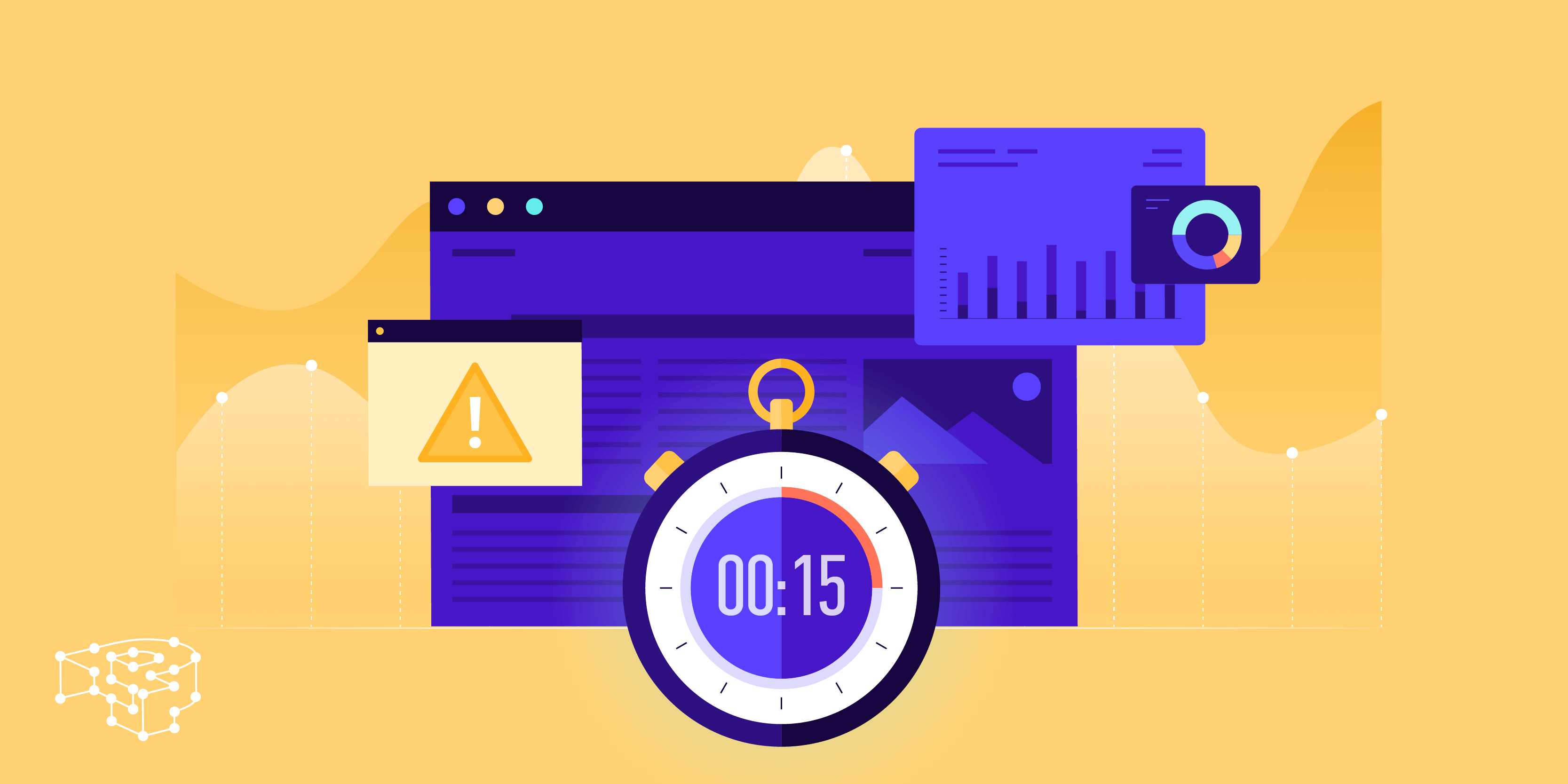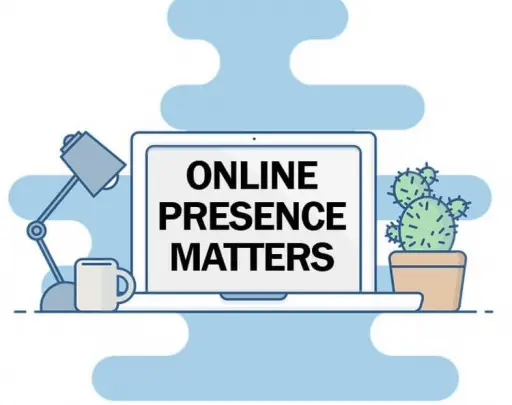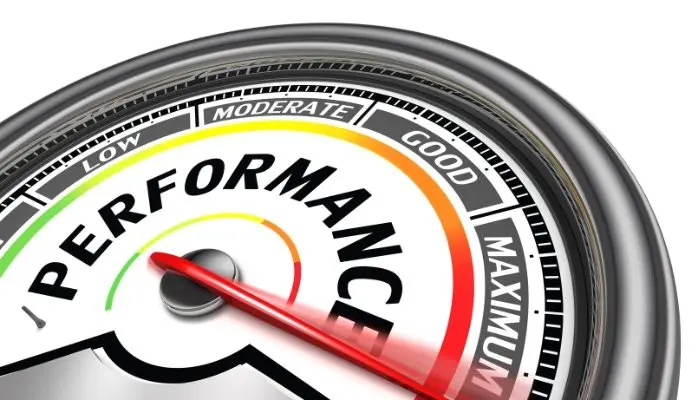The Ultimate Guide to Website Monitoring: Boost Your Online Presence in 2024
Discover how website monitoring can revolutionize your online business. Learn about cutting-edge tools, best practices, and expert strategies to ensure your website's peak performance and user satisfaction.
Posted by
 Sabyr Nurgaliyev
Sabyr Nurgaliyev
Introduction: Why Your Website Needs a 24/7 Guardian Angel
Hey there, digital trailblazer! 👋 Ever wondered what's happening behind the scenes of your website when you're not looking? Well, buckle up, because we're about to dive into the fascinating world of website monitoring. It's like having a guardian angel for your online presence, keeping watch 24/7 so you can sleep soundly at night (or, let's be real, binge-watch your favorite series without worrying about your site crashing).
But why should you care about website monitoring? Well, let me ask you this: Would you leave your brick-and-mortar store unattended, hoping everything goes smoothly? Of course not! Your website deserves the same level of attention and care. After all, in today's digital age, your website is often the first (and sometimes only) impression you make on potential customers.
So, grab your favorite caffeinated beverage, and let's embark on this journey to unlock the secrets of website monitoring. Trust me, by the end of this guide, you'll be a website monitoring wizard, ready to take your online presence to new heights!
What is Website Monitoring, Anyway?
Alright, let's start with the basics. What exactly is website monitoring? Well, imagine having a super-smart, tireless robot that constantly checks your website for any issues. That's essentially what website monitoring does. It's like having a team of digital detectives working around the clock to ensure your site is running smoothly.
But wait, there's more! Website monitoring isn't just about making sure your site is up and running. Oh no, it goes way beyond that. It's about:
- Checking your site's pulse: Is it alive and kicking, or has it decided to take an unscheduled nap?
- Measuring speed: Because in the online world, slow and steady definitely does not win the race.
- Hunting for bugs: Those pesky little errors that can turn your beautiful website into a digital nightmare.
- Keeping an eye on security: Because the internet can be a scary place, and your website needs protection.
- Analyzing user experience: Are your visitors having a smooth journey, or are they getting lost in a maze of broken links and slow-loading pages?
Now, you might be thinking, "Can't I just check my website myself?" Sure, you could. But unless you're planning on giving up sleep (and, you know, having a life), you're going to need some help. That's where website monitoring services come in handy.
The Nitty-Gritty: How Website Monitoring Works
Let's get a bit technical for a moment (don't worry, I promise to keep it interesting). How does website monitoring actually work? Well, it's not magic, although sometimes it might seem like it.
The Basics: Ping, Ping, Ping!
At its core, website monitoring involves sending regular requests (think of them as little "hellos") to your website from various locations around the world. These requests, often called "pings," check if your website responds and how quickly it does so.
But here's where it gets cool: these pings aren't just simple yes/no checks. They're like little spies, gathering all sorts of valuable intel about your website's performance. They can check things like:
- Response time: How long does it take for your website to say "hello" back?
- Availability: Is your website actually there when someone comes knocking?
- Content accuracy: Is your website serving up the right content, or has it gone rogue?
- Functionality: Are all those fancy features you've added working as they should?
Advanced Techniques: Playing Detective
But wait, there's more! (I feel like an infomercial host, but seriously, this stuff is exciting!) Advanced website monitoring tools go beyond simple pings. They can:
-
Simulate user behavior: These tools can act like real users, clicking through your site, filling out forms, and even making purchases. It's like having a team of tireless testers working 24/7.
-
Monitor from multiple locations: Because your website should work just as well for someone in Tokyo as it does for someone in Toronto.
-
Check for security vulnerabilities: Because nobody wants their website to be the digital equivalent of a house with all its doors and windows left open.
-
Analyze performance metrics: Things like page load time, server response time, and resource usage. It's like giving your website a constant health check-up.
-
Integration with other tools: Many monitoring services can play nice with your other tech tools, sending alerts to your team chat or automatically creating support tickets when issues arise.
Why You Can't Afford to Ignore Website Monitoring
Now, you might be thinking, "My website seems fine. Do I really need all this monitoring jazz?" Well, let me paint you a picture:
Imagine you're running an e-commerce store. It's Black Friday, and you're expecting a surge of eager shoppers ready to snag your amazing deals. But suddenly, your website crashes under the load. Oops! 😱
Or picture this: You've just launched a brilliant marketing campaign, driving tons of traffic to your site. But unbeknownst to you, there's a broken link on your main landing page. All those potential customers? They're bouncing faster than a kangaroo on a trampoline.
These scenarios aren't just hypothetical horror stories. They happen every day to businesses that don't prioritize website monitoring. Here's why you can't afford to be one of them:
1. Downtime is a Money Pit
Did you know that for large online retailers, just one hour of downtime can cost millions in lost revenue? Even for smaller businesses, the cost of downtime can be significant. It's not just about lost sales, either. Downtime can damage your reputation, lose you customers, and even impact your search engine rankings.
2. Speed is King (and Queen, and the Whole Royal Court)
In the digital world, patience is not a virtue. Studies show that 47% of consumers expect a web page to load in 2 seconds or less. If your site is slow, you're not just frustrating your visitors – you're actively driving them away.
3. User Experience Makes or Breaks Your Success
In today's competitive online landscape, user experience is everything. If your site is buggy, difficult to navigate, or just plain annoying to use, your visitors will bounce faster than you can say "website monitoring." And they probably won't come back.
4. Security Breaches are a Nightmare
Imagine waking up to find your website has been hacked, your customers' data compromised, and your brand reputation in tatters. It's a scenario that keeps many business owners up at night – and for good reason. Regular monitoring can help detect and prevent security vulnerabilities before they become catastrophic breaches.
5. SEO Loves a Healthy Website
Search engines like Google take into account factors like site speed, uptime, and user experience when determining search rankings. By keeping your site healthy and performant, you're not just making your users happy – you're also giving your SEO a boost.
Choosing the Right Website Monitoring Tool: A Buyer's Guide
Alright, so you're convinced that website monitoring is essential. (If you're not, go back and read the last section again. I'll wait.) But with so many options out there, how do you choose the right tool for your needs? Don't worry, I've got you covered. Here's your comprehensive buyer's guide to website monitoring tools:
1. Define Your Needs
Before you start shopping around, take a moment to think about what you actually need. Are you running a small blog, or a large e-commerce site? Do you need basic uptime monitoring, or advanced performance analytics? Make a list of your must-have features.
2. Consider These Key Features
When evaluating different tools, keep an eye out for these important features:
- Real-time alerts: Because you need to know about problems ASAP.
- Customizable monitoring intervals: How often do you want your site checked?
- Multiple check locations: To ensure your site works well globally.
- Detailed reporting: Because data is power.
- Integration capabilities: Can it play nice with your other tools?
- User-friendly interface: Because ain't nobody got time for a steep learning curve.
3. Look at the Pricing Structure
Website monitoring tools come in all shapes and sizes, from free basic plans to enterprise-level solutions that cost thousands per month. Consider your budget, but remember – sometimes it's worth investing a bit more for peace of mind and robust features.
4. Check Out the Support
When something goes wrong with your website, you want to know you can get help fast. Look for providers that offer 24/7 support, and check out their response times and customer reviews.
5. Try Before You Buy
Many website monitoring services offer free trials. Take advantage of these to test drive different tools and see which one feels right for your needs.
Setting Up Your Website Monitoring: A Step-by-Step Guide
Congratulations! You've chosen your website monitoring tool. Now what? Don't worry, I've got your back. Here's a step-by-step guide to getting your monitoring set up:
Step 1: Sign Up and Log In
Okay, this one's pretty self-explanatory. Sign up for your chosen service and log in to your shiny new dashboard.
Step 2: Add Your Website
Most tools will have an option to "Add a new monitor" or "Add a new website." Click that and enter your website's URL. Easy peasy!
Step 3: Choose Your Monitoring Type
Depending on your tool, you might have options like:
- Uptime monitoring: Checks if your site is up and running.
- Performance monitoring: Measures things like load time and server response time.
- Functionality monitoring: Checks if specific features or processes are working correctly.
Choose the types that make sense for your site.
Step 4: Set Your Check Frequency
How often do you want your site monitored? Every minute? Every 5 minutes? Every hour? The more frequent the checks, the faster you'll know about any issues – but it might also cost more.
Step 5: Configure Your Alerts
Decide how you want to be notified when something goes wrong. Email? SMS? Carrier pigeon? (Okay, maybe not that last one.) You might also want to set up escalation procedures for serious issues.
Step 6: Set Up Integrations
If your monitoring tool integrates with other services you use (like Slack or PagerDuty), now's the time to set those up.
Step 7: Customize Your Dashboard
Arrange your dashboard so you can see the most important information at a glance. Most tools allow you to create custom views or widgets.
Step 8: Test Your Setup
Don't just assume everything's working – test it out! You might even want to intentionally cause a problem (like temporarily taking your site offline) to make sure your alerts are working correctly.
Best Practices for Effective Website Monitoring
Now that you've got your monitoring set up, let's talk about how to use it effectively. Here are some best practices to keep in mind:
1. Don't Overdo the Alerts
It's tempting to set up alerts for every little thing, but resist the urge. Too many alerts can lead to alert fatigue, where you start ignoring notifications because there are just too many. Focus on the truly important stuff.
2. Regularly Review Your Reports
Don't just wait for alerts – make a habit of regularly reviewing your monitoring reports. This can help you spot trends and potential issues before they become big problems.
3. Keep Your Monitoring Up to Date
As your website evolves, make sure your monitoring evolves with it. Regularly review and update your monitoring settings to ensure you're tracking everything that matters.
4. Use Synthetic Monitoring
Synthetic monitoring involves simulating user interactions with your site. This can help you catch issues that might not show up in basic uptime or performance monitoring.
5. Monitor from Multiple Locations
If you have a global audience, make sure you're monitoring your site's performance from different geographic locations. What works well in New York might not work so well in New Delhi.
6. Set Realistic Thresholds
When setting up performance thresholds, be realistic. While it's great to aim for lightning-fast load times, setting your alert threshold too low will just result in a lot of false alarms.
7. Have a Response Plan
Don't wait for something to go wrong to figure out how you'll handle it. Have a clear plan in place for different types of issues, including who's responsible for what.
Common Website Monitoring Mistakes (and How to Avoid Them)
Even with the best intentions, it's easy to make mistakes when it comes to website monitoring. Here are some common pitfalls to watch out for:
Mistake #1: Monitoring Only Uptime
While uptime is crucial, it's not the only thing that matters. A site can be "up" but still performing poorly or having functionality issues. Make sure you're monitoring a range of metrics.
Mistake #2: Ignoring Mobile Performance
With more and more people browsing on mobile devices, it's crucial to monitor how your site performs on smartphones and tablets, not just desktops.
Mistake #3: Neglecting Third-Party Services
If your site relies on third-party services (like payment gateways or content delivery networks), make sure you're monitoring those too. A problem with a third-party service can impact your site just as much as a problem with your own infrastructure.
Mistake #4: Failing to Act on Data
Monitoring is only useful if you actually do something with the information it provides. Make sure you have processes in place to address issues and implement improvements based on your monitoring data.
Mistake #5: Overlooking Security Monitoring
Don't forget about security! In addition to performance and functionality, make sure you're monitoring for potential security threats and vulnerabilities.
The Future of Website Monitoring: What's Next?
As we wrap up our deep dive into website monitoring, let's take a moment to look ahead. What does the future hold for this crucial aspect of web management? Here are some trends to watch:
1. AI and Machine Learning
Artificial Intelligence and Machine Learning are set to revolutionize website monitoring. These technologies can help predict issues before they occur, automatically diagnose problems, and even suggest solutions.
2. Increased Focus on User Experience
While traditional metrics like uptime and load speed will always be important, we're likely to see an increased focus on monitoring the overall user experience. This might include things like tracking user journeys, analyzing interaction patterns, and measuring engagement metrics.
3. Integration with DevOps Practices
As DevOps practices become more widespread, we'll likely see closer integration between website monitoring tools and development workflows. This could lead to faster issue resolution and more proactive performance optimization.
4. Enhanced Security Monitoring
With cyber threats becoming increasingly sophisticated, website monitoring tools are likely to incorporate more advanced security features. This might include things like real-time threat detection and automated vulnerability assessments.
5. IoT and Edge Computing Monitoring
As the Internet of Things (IoT) grows and edge computing becomes more prevalent, website monitoring will need to adapt to these new paradigms. We might see tools designed specifically for monitoring IoT devices or edge computing nodes.
Conclusion: Your Website's New Best Friend
And there you have it, folks! We've journeyed through the world of website monitoring, from understanding its importance to implementing best practices and looking towards the future. Remember, in today's digital landscape, your website is often your first (and sometimes only) chance to make a great impression. Website monitoring is like having a trusty sidekick, always there to ensure your site is putting its best foot forward.
So, are you ready to take your website to the next level? With the right monitoring tools and strategies in place, you'll be well on your way to providing an exceptional user experience, boosting your SEO, and staying ahead of the competition. Don't let your website be a lone wolf in the vast digital wilderness. Give it the support it deserves with robust website monitoring.
Remember, the internet never sleeps, and neither should your website monitoring. So go forth, implement these strategies, and watch your online presence soar!
FAQs: Your Burning Questions Answered
Still have questions? Don't worry, I've got you covered. Here are answers to some frequently asked questions about website monitoring:
-
Q: How often should I monitor my website?
A: The frequency of monitoring depends on your website's needs, but most experts recommend checking at least every 5 minutes for critical sites. Less critical sites might be fine with checks every 15-30 minutes. -
Q: Can website monitoring slow down my site?
A: No, properly implemented website monitoring should have no noticeable impact on your site's performance. Most monitoring tools use lightweight requests that don't significantly increase server load.
increase server load.
-
Q: What's the difference between synthetic and real user monitoring?
A: Synthetic monitoring simulates user behavior to test your site, while real user monitoring collects data from actual user interactions. Both have their place – synthetic monitoring provides consistent, controlled tests, while real user monitoring gives you insights into actual user experiences. -
Q: How much does website monitoring cost?
A: Costs vary widely depending on the service and features you need. Basic plans can start as low as $10/month, while enterprise-level solutions can cost hundreds or thousands per month. Many providers offer free trials, so you can test before committing. -
Q: Can I monitor multiple websites with one service?
A: Yes, most website monitoring services allow you to monitor multiple sites from a single dashboard. This can be especially useful for agencies or businesses managing multiple web properties. -
Q: What should I do if my monitoring tool detects an issue?
A: First, verify the issue to ensure it's not a false alarm. Then, follow your incident response plan to address the problem. This might involve notifying your development team, implementing a fix, or rolling back recent changes. Always communicate with affected users and stakeholders.
The Last Word: Your Website's Health is Your Business's Wealth
As we wrap up this deep dive into the world of website monitoring, let's take a moment to reflect on why all of this matters. In today's digital-first world, your website isn't just a digital brochure – it's the beating heart of your online presence. It's where customers find you, where they learn about your products or services, and often where they decide whether to do business with you.
Think about it: when was the last time you stuck around on a slow, buggy, or unreliable website? Probably never. Your customers are no different. They expect a smooth, fast, and reliable experience every time they visit your site. Website monitoring is your secret weapon in meeting (and exceeding) those expectations.
But it's not just about keeping your customers happy (although that's a pretty big deal). Effective website monitoring can also:
-
Save you money: By catching and fixing issues before they become major problems, you can avoid costly downtime and lost sales.
-
Boost your SEO: Search engines love fast, reliable websites. By keeping your site in top shape, you're giving your search rankings a helping hand.
-
Improve your decision-making: The data you get from website monitoring can help you make informed decisions about everything from server upgrades to content strategy.
-
Give you peace of mind: With a good monitoring system in place, you can rest easy knowing that someone (or something) is always keeping an eye on your digital storefront.
So, as you go forth into the wild world of the web, remember: your website's health is your business's wealth. Treat it well, keep a watchful eye on it, and it will repay you many times over.
Now, it's your turn. What steps will you take to implement or improve your website monitoring? How will you use the insights you gain to take your online presence to the next level? The digital world is waiting – go out there and make your mark!
And remember, in the ever-changing landscape of the internet, staying informed is key. Keep learning, keep adapting, and most importantly, keep monitoring. Your website (and your bottom line) will thank you.
Happy monitoring, and here's to your online success! 🚀
Related Articles

Discover how website monitoring can revolutionize your online business. Learn about cutting-edge tools, best practices, and expert strategies to ensure your website's peak performance and user satisfaction.
 Sabyr NurgaliyevNov 9, 2024
Sabyr NurgaliyevNov 9, 2024
Discover how website monitoring can revolutionize your online business. Learn about cutting-edge tools, best practices, and expert strategies to ensure your website's peak performance and user satisfaction.
 Sabyr NurgaliyevNov 8, 2024
Sabyr NurgaliyevNov 8, 2024
Discover how website monitoring can revolutionize your online business. Learn about cutting-edge tools, best practices, and expert strategies to ensure your website's peak performance and user satisfaction.
 Sabyr NurgaliyevNov 7, 2024
Sabyr NurgaliyevNov 7, 2024
Explore everything about website downtime and how monitoring services can save your online presence. Learn about the tools, tactics, and technologies that can help you stay online 24/7.
 Sabyr NurgaliyevAug 23, 2024
Sabyr NurgaliyevAug 23, 2024
Discover how website monitoring apps, network uptime monitors, and uptime services ensure your online presence remains uninterrupted. Learn about the importance of downtime monitoring and server uptime.
 Sabyr NurgaliyevAug 21, 2024
Sabyr NurgaliyevAug 21, 2024
Master website performance monitoring with proven techniques, tools, and strategies to optimize server reliability and minimize downtime.
 Sabyr NurgaliyevNov 29, 2024
Sabyr NurgaliyevNov 29, 2024